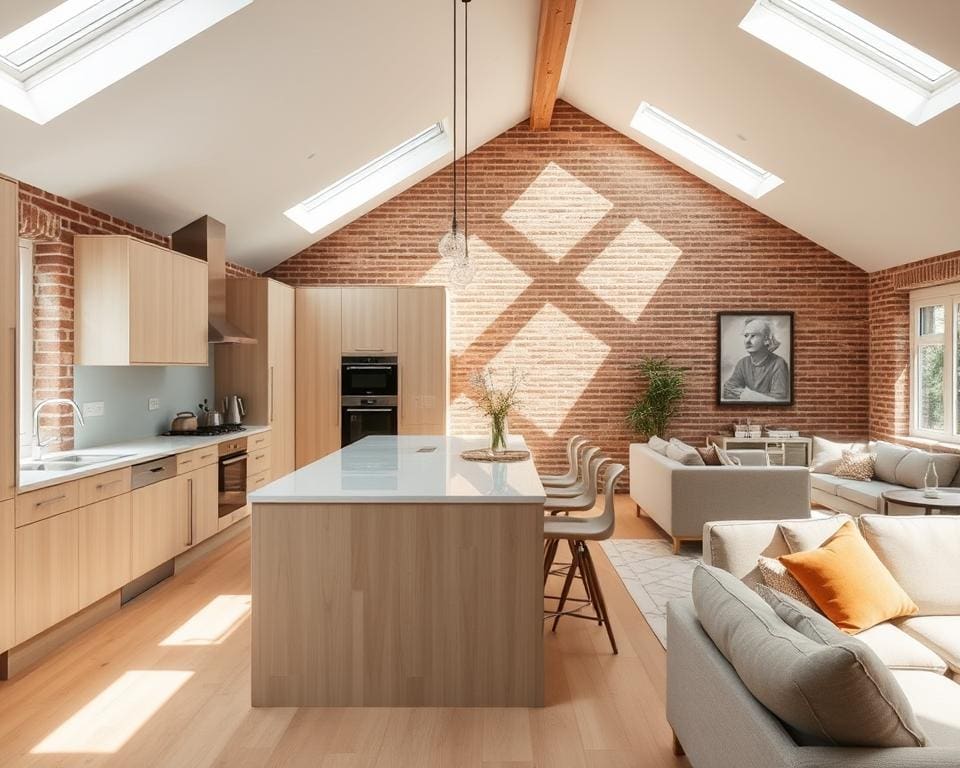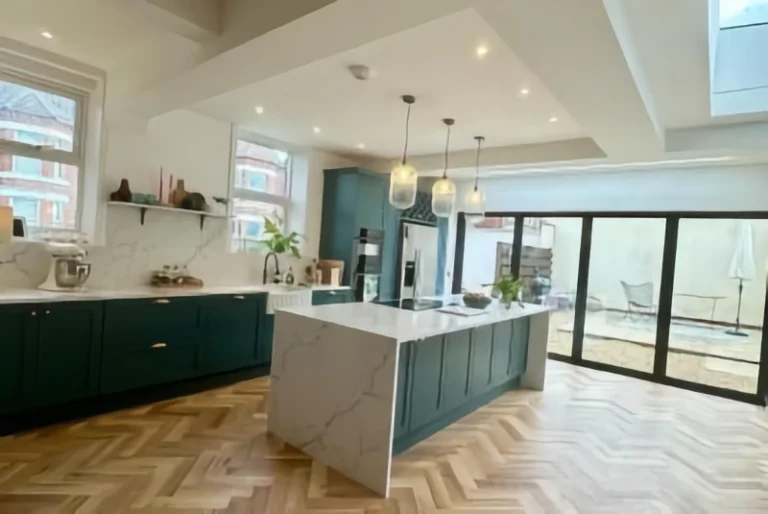In recent years, Northern Irish kitchen design has seen a remarkable evolution, closely reflecting contemporary kitchen trends that emphasise both style and practicality. The standout shift towards open-plan living has transformed these spaces, enabling kitchens to become integral parts of home layouts, seamlessly blending with dining and living areas. This modern approach does not neglect traditional elements; instead, it harmoniously combines them, offering a distinctive aesthetic that appeals to various tastes.
Local craftsmanship shines through, with bespoke designs tailored to individual needs and preferences, ensuring every kitchen is a true reflection of personality. Moreover, the increasing focus on sustainability is reshaping how we perceive kitchen renovations, with eco-friendly materials and energy-efficient appliances becoming commonplace in modern kitchens. With these trends at the forefront, the landscape of Northern Irish kitchen design is more vibrant and innovative than ever.
Embracing Open-Plan Living in Northern Irish Kitchens
Open-plan living has transformed the landscape of Northern Irish kitchens, fostering a vibrant atmosphere that encourages family interaction. This modern kitchen design promotes spaciousness, merging the cooking, dining, and living areas into a fluid communal space.
A family-friendly space is essential in today’s homes, where connectivity and togetherness thrive. The layout allows family members to engage in conversation while meal preparation occurs, creating moments of joy amidst daily routines. Additionally, the abundant natural light that flows through open-plan kitchens enhances the inviting ambiance, making the home feel warm and welcoming.
Incorporating multifunctional furniture, such as islands and breakfast bars, maximises usability and storage. These features cater to the dynamic needs of contemporary families while adding an element of style to Northern Irish kitchens. Embracing open-plan living is not just a trend; it’s a lifestyle choice that reflects a new era of home design and family interaction.

Are Belfast sinks still a must in UK kitchens?
Belfast sinks have maintained their status as a quintessential element in UK kitchens, particularly due to their classic design and functional advantages. Known for their robust ceramic craftsmanship, these sinks reflect a rich heritage while seamlessly fitting into both contemporary and traditional kitchen designs. Their spacious size offers practicality in busy environments, making them a suitable choice for families and avid home cooks alike.
The Enduring Popularity of Belfast Sinks
The timeless appeal of Belfast sinks cannot be overstated. Homeowners treasure their aesthetic flexibility, which adds to the visual charm of any kitchen. Whether renovated or newly minted, the incorporation of Belfast sinks enhances the overall design, elevating functionality while remaining stylish. Noteworthy brands such as Rangemaster and Clark continue to produce these iconic sinks, solidifying their place in modern UK kitchens.
Choosing the Right Belfast Sink for Your Space
When selecting a Belfast sink, several critical factors come into play, including size, material, and sink styles. Prioritising compatibility with existing cabinets and worktops ensures a cohesive kitchen renovation. Fireclay is a popular material that not only delivers an authentic look but also radiates warmth.
- Consider the dimensions to harmonise with your kitchen layout.
- Explore both single and double bowl options for enhanced versatility.
- Examine trends in finishes, whether matte or gloss, to reflect your personal style.
Integrating Traditional Elements into Modern Designs
The charm of traditional kitchens lies in their ability to blend elegance with functionality. Characteristics of a traditional kitchen often include ornate cabinetry, rich wood finishes, and intricate detailing that evoke a sense of nostalgia. Homeowners in Northern Ireland seek kitchen designs that offer timeless features, allowing them to create spaces that resonate with classic styles while accommodating contemporary lifestyles.
Characteristics of a Traditional Kitchen
A traditional kitchen is a celebration of craftsmanship and rich aesthetics. Common elements include:
- Shaker-style cabinets that have become increasingly popular, offering a balance of simplicity and sophistication.
- Heritage colour palettes that add depth and character, making the kitchen feel inviting.
- Ornate mouldings and trim that reflect attention to detail and artistry in kitchen design.
These features ensure that traditional kitchens remain functional and reflect a sense of warmth and comfort, tracing back to a cherished past.
Farmhouse Kitchen Aesthetics in Northern Ireland
The trend of farmhouse kitchens has gained significant popularity in Northern Ireland. This approach combines rustic elements with modern conveniences, creating a harmonious atmosphere. Key attributes of farmhouse kitchen aesthetics include:
- Reclaimed wood beams that add warmth and texture, embodying the essence of a country home.
- Vintage lighting that enhances the nostalgic feel while providing practicality.
- Open shelving that invites decorative displays and easy access to culinary essentials.
Farmhouse sinks and large dining tables create an inviting space for gatherings, emphasising community and connection. An earthy colour palette enhances the overall comfort and authenticity, while local artisan products, such as handmade pottery, add unique character. This blend of rustic elements allows homeowners to appreciate timeless traditions while enjoying modern living.
Sustainable Materials and Eco-Friendly Designs
As homeowners increasingly prioritise sustainability in their kitchen renovations, the use of sustainable materials and eco-friendly designs is at the forefront of modern kitchens. Embracing these principles not only creates a healthier environment but also ensures that style and functionality coexist harmoniously.
Incorporating Recycled and Natural Materials
Utilising recycled and natural materials in kitchen design is becoming a popular choice among discerning homeowners. Materials such as bamboo countertops and reclaimed wood cabinets offer aesthetic appeal while significantly reducing environmental impact. These choices enhance the beauty of modern kitchens, allowing for unique and personalised spaces. Sourcing local materials contributes to lower carbon footprints and supports community economies, aligning perfectly with sustainability goals.
Energy-Efficient Appliances for Modern Kitchens
Energy-efficient appliances are essential for any contemporary kitchen design. They not only minimise energy consumption but also play a vital role in achieving long-term sustainability. Leading brands like Bosch and Whirlpool are pioneering innovations in eco-friendly technologies, producing appliances that deliver exceptional performance while helping to conserve energy. This integration of smart technology allows homeowners to create efficient kitchen spaces that reflect their commitment to sustainability without compromising convenience or utility.
Smart Technology Trends in Kitchen Design
The integration of smart technology into kitchen design is transforming modern kitchens with innovative solutions that enhance cooking experiences and redefine functionality. Homeowners are increasingly turning to smart devices that offer convenience and connectivity, making daily tasks more efficient.
Revolutionising Cooking with Smart Devices
Smart ovens and refrigerators equipped with connectivity features allow users to control operations remotely, making meal preparation a seamless process. With the ability to access recipes and cooking instructions at one’s fingertips, these smart devices bring a new level of excitement to culinary adventures. Enhanced by automated systems for lighting and temperature control, the overall kitchen environment becomes more comfortable and efficient, reflecting the modern lifestyle.
Enhancing Home Security and Efficiency
Beyond cooking improvements, smart technology plays a crucial role in enhancing home security and overall efficiency. Security systems integrated into the kitchen can monitor activities and alert homeowners to potential issues. Equipped with sensors and cameras, these smart devices contribute to peace of mind while optimising energy use. As homeowners seek integrated solutions, the blend of convenience and safety is increasingly valued, driving the trend towards intelligent living spaces.
Popular Colour Schemes and Finishes for 2023
As we delve into 2023, the landscape of colour schemes in Northern Irish kitchens is evolving, favouring earthy tones and soft pastels that resonate with nature’s serene palette. Trending colours like sage green and soft blues infuse warmth and calmness into these spaces, creating an inviting atmosphere that is both stylish and functional. Rich terracotta is also making a significant comeback, providing a striking contrast that adds vibrancy to kitchen settings.
The choice of kitchen finishes plays a crucial role in enhancing the overall aesthetic. Matte and satin textures are gaining popularity as they offer a sophisticated touch without overwhelming the design. These finishes complement the trending colours beautifully, allowing homeowners to create a cohesive look that reflects their personal style. The resurgence of darker cabinets paired with lighter countertops is a contemporary strategy that introduces depth and interest into the kitchen environment.
For anyone considering renovations, embracing these colour schemes and finishes not only promises a fresh look but also encourages self-expression. The interplay between trending colours and carefully selected kitchen finishes can turn any Northern Irish kitchen into a captivating focal point of the home, showcasing a balance of style and practicality that resonates with modern living.









